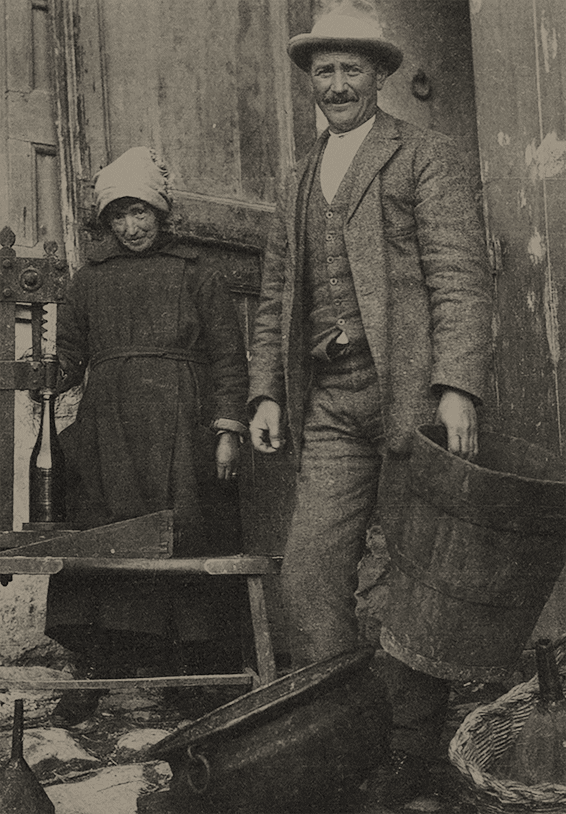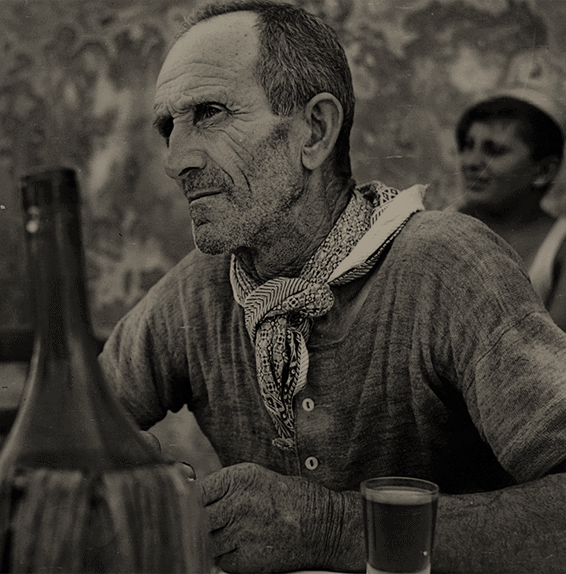Autumn
In the field, half grey and half black,
there remains a plough without any oxen;
it appears forgotten in the light mist.
And, every so often, to the millpond come
the washer women, sloshing around,
with deep splashes and long lullabies:
The wind blows and the leaves fall like snow,
and you have not yet returned to your village!
When you left, how sad I remained!
Like the plough in the midst of the fallow land.
(“Lavandare”, a poem by Giovanni Pascoli)
In autumn, the landscape of the countryside changes yet again. The months of September and October and the “Indian Summer” that lasts until Saint Martin’s Day (11th November), are crucial for providing continuity to the farms’ activities: the earth is then entrusted with the seeds that will give the following year’s harvest!
As soon as the wheat has been harvested, and before the soil becomes dry, it is ploughed, and any clods are broken up. Our collection displays various examples of animal-drawn ploughs. A plough is made up of several parts: the coulter, which cuts vertically through the soil, the ploughshare, which cuts horizontally, and the mouldboard, which turns over the clods of earth and breaks them up.
In August the sun “bakes” the clods and alters the structure of the soil, which is then tilled in autumn before receiving the new seeds.
A traditional Romagnolo adage reminds one of the mediaeval “Veronese Riddle”, which likens the activity of sowing to that of writing:

Zenc somna, du arbega
In the collection you will also find seeding machines (some of which were even pulled by humans), used for sowing wheat, maize and beetroot.
Autumn is also the season of the grape harvest: for many farmers in Romagna, the feast of Saint Michael (29th September) marked the beginning of picking the grapes. n many cultures, the period of the vintage represents a festive occasion – an opportunity to meet and share a special experience – as well as being participated in by almost the whole of the rural community.
During the harvest, the grapes are removed from the shoots with pruning knivesand secateurs, placed in baskets, then emptied into tubs or vats: in Emilia the grapes were placed “whole” in the vat, whilst in Romagna they were crushed in the vineyard – by foot or with a pistarola – in the tubs before being emptied into the “castellata” (a horse-drawn barrel) to be transferred to the wine cellar. Crushing was often assigned to women and children: as you can see, the concept of “soft pressing” is a very traditional one!
The crushed grapes are then transferred into vats, where they are left to ferment for about ten days before proceeding with drawing off, i.e., the separation of the must/wine from its solid parts (lees and pomace). Then, once the wine has been put into barrels, there begins the repeated ritual of racking, to gradually remove the increasingly fine lees and so make the wine bright.

D’ int a lazzer, ch’u s’inrusess la pampna,
e pend i grëp, che, a monzi, i bota e’ ven:
tarbian, sansvzes, cagnina e bionda albana
che i met adoss passion d’amor e ‘d ben
(Libero Ercolani)


